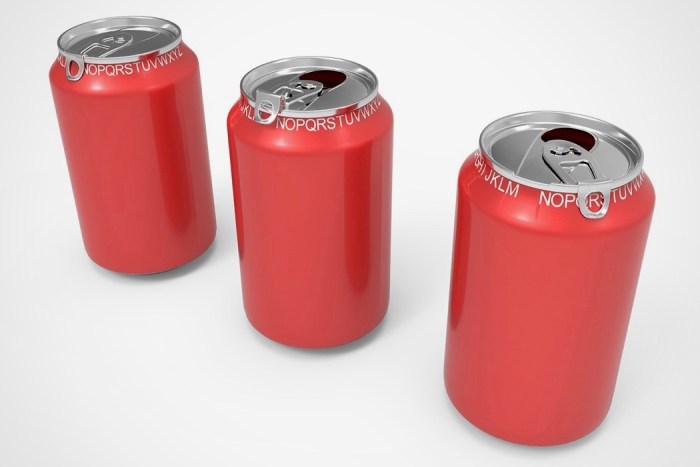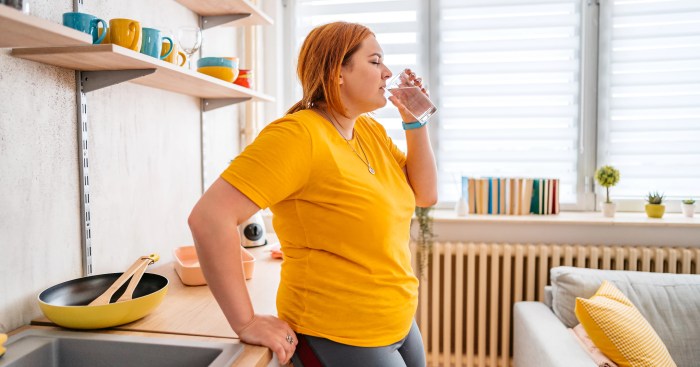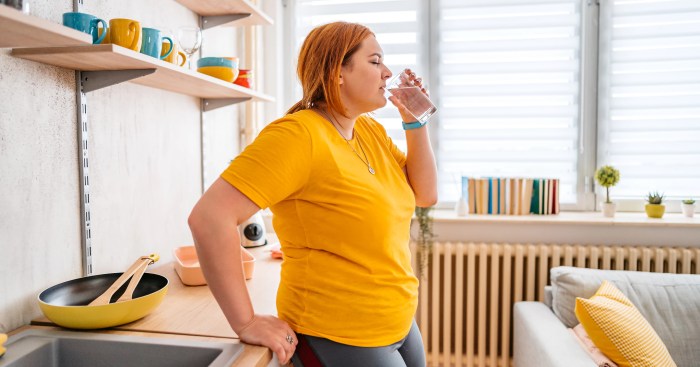Can you sweat out a cold? This question pops up frequently, and the answer isn’t as straightforward as you might think. Understanding the science behind colds, sweating, and the body’s immune response is key to understanding if sweating can actually impact the duration or severity of a cold. This article dives into the complexities of this common ailment and explores the fascinating interplay between sweating and illness.
The common cold, caused by viruses, typically involves a range of symptoms like sneezing, sore throat, and runny nose. The body’s natural response to a cold is an attempt to fight off the virus, and sweating plays a part in this process, but not in a way that directly eliminates the virus. We’ll explore the physiological mechanisms involved in sweating and how they relate to the body’s overall response to a cold.
This includes examining how factors like dehydration, medication, and overall health can influence sweating during a cold.
Understanding the Nature of Colds
The common cold, a ubiquitous ailment, affects people of all ages. Understanding its nature, from its causes to the body’s response, can empower us to manage and cope with these often frustrating episodes. This exploration delves into the specifics of the common cold, emphasizing its characteristics and the intricate mechanisms our bodies employ to combat these viral intruders.The common cold is a highly contagious viral infection affecting the upper respiratory tract.
It’s characterized by a spectrum of symptoms that can vary in severity and duration. Its viral nature underscores its susceptibility to transmission through close contact with infected individuals.
Causes of the Common Cold
Numerous viruses, primarily rhinoviruses, coronaviruses, and others, can cause the common cold. These viruses readily spread through respiratory droplets released when an infected person coughs or sneezes. Direct contact with contaminated surfaces can also facilitate transmission. Hygiene practices, such as frequent handwashing, play a crucial role in minimizing the risk of infection.
Symptoms of the Common Cold
Common cold symptoms typically manifest within one to three days of infection. These symptoms include a runny or stuffy nose, sneezing, sore throat, cough, and sometimes a slight headache or body aches. The severity of symptoms varies considerably from person to person.
The Body’s Immune Response, Can you sweat out a cold
The body’s immune system plays a critical role in combating viral infections like the common cold. White blood cells, such as lymphocytes and macrophages, recognize and target the invading viruses. The immune response involves the production of antibodies, specialized proteins that neutralize the virus and prevent further infection. This process, while crucial, can also lead to the symptoms we experience.
Temperature Regulation During Illness
The body meticulously regulates its temperature during illness, often through a process of fever. Fever, an elevation in body temperature, is a natural defense mechanism. It creates an inhospitable environment for the viruses, potentially slowing their replication. This is part of the body’s innate immune response. The hypothalamus, a region of the brain, plays a critical role in maintaining body temperature.
When an infection occurs, the hypothalamus adjusts the body’s thermostat.
Sweating and the Body’s Response to a Cold
Sweating is a physiological process that helps regulate body temperature. While sweating may occur during a cold, it’s not a primary mechanism for eliminating the virus. The virus remains within the respiratory system, and sweating does not directly affect the virus’s presence. Instead, the sweating response contributes to the body’s overall effort to combat the infection and restore thermal balance.
Comparison of Symptoms
| Symptom | Common Cold | Fever/Elevated Body Temperature |
|---|---|---|
| Runny nose | Yes | Possible, but less prominent |
| Sore throat | Yes | Possible |
| Cough | Yes | Possible, but less prominent |
| Headache | Possible | Possible, more severe |
| Body aches | Possible | Possible, more severe |
| Elevated temperature | No | Yes, consistently higher than normal body temperature |
The Role of Sweating in Illness: Can You Sweat Out A Cold
Sweating, a crucial bodily function, plays a vital role in maintaining homeostasis, especially during illness. Understanding the physiological mechanisms behind sweating, its impact on temperature regulation, and its potential influence on the course of a cold is essential for managing symptoms effectively. This discussion delves into the intricacies of sweating and its relationship with illness.Sweating is a complex process involving specialized glands and intricate neural pathways.
It’s a critical component of thermoregulation, helping the body maintain a stable internal temperature. While sweating doesn’t directly eliminate viruses, it can indirectly affect the severity of cold symptoms through its role in regulating body temperature. This discussion will explore the intricacies of sweating, including the types of glands involved and their functions.
Physiological Processes of Sweating
Sweating is primarily a thermoregulatory response, initiated by the hypothalamus in the brain. The hypothalamus monitors internal body temperature and activates the sympathetic nervous system when temperatures rise above the normal range. This activation signals the sweat glands to produce sweat. Sweat is primarily composed of water, electrolytes, and trace amounts of other substances. The process is tightly controlled to maintain electrolyte balance.
Sweating and Temperature Regulation
The evaporation of sweat from the skin’s surface absorbs heat, leading to a cooling effect. This is a vital mechanism for maintaining a stable internal temperature, particularly during physical exertion or when environmental temperatures are high. In cases of illness, such as a cold, this temperature regulation is crucial for managing fever and discomfort.
Sweating and Viral Elimination
While sweating plays a critical role in thermoregulation, it does not directly eliminate viruses or bacteria. Viruses that cause colds reside within cells, not in the bloodstream or fluids such as sweat. Therefore, sweating itself is not an effective method for expelling these pathogens. Treatments focused on viral eradication are not facilitated by sweating.
Effects of Sweating on Cold Symptoms
Sweating can influence the severity of cold symptoms indirectly. When a person sweats, they lose fluids, and this can lead to dehydration if not replenished. Dehydration can exacerbate cold symptoms such as sore throat and nasal congestion. Moreover, the act of sweating itself can sometimes lead to discomfort.
Types of Sweat Glands and Their Roles
| Type of Sweat Gland | Location | Role in Thermoregulation |
|---|---|---|
| Eccrine Glands | Distributed throughout the body | Primary sweat glands responsible for thermoregulation. They produce a watery secretion that helps cool the body. |
| Apocrine Glands | Concentrated in areas with hair follicles (e.g., armpits, groin) | Produce a thicker, more viscous secretion that may become odoriferous due to bacterial action. Their role in thermoregulation is less significant than eccrine glands. |
| Apoeccrine Glands | Found in the palms of hands and soles of feet. | These glands are unique and not involved in thermoregulation as the main function is to produce a thicker sweat for secretion. |
The table above Artikels the different types of sweat glands and their respective roles in thermoregulation. The eccrine glands are primarily responsible for regulating body temperature, while apocrine glands play a less significant role in this process.
Potential Misconceptions and Myths
Many popular beliefs about colds and sweating persist despite scientific understanding. These beliefs, often rooted in cultural traditions or anecdotal experiences, can lead to inaccurate conclusions about the effectiveness of sweating as a treatment. Understanding these misconceptions is crucial for making informed decisions about managing cold symptoms.Commonly held beliefs about sweating and colds often stem from a misunderstanding of the body’s natural responses to illness.
While sweating can be a symptom of a cold, it isn’t a cure, and certain practices based on these beliefs may not be beneficial and even potentially harmful. This section delves into these myths and examines the scientific basis for treating colds.
Common Misconceptions About Sweating and Colds
Many people believe that inducing a sweat is a good way to get rid of a cold. This idea is often connected to the belief that sweating flushes out toxins. However, the body doesn’t work in this way. While sweating is a vital bodily function, it doesn’t directly eliminate the viruses that cause colds.
Scientific Basis for Common Beliefs
The idea that sweating can expel the virus causing a cold is not supported by scientific evidence. Colds are caused by viruses, and these viruses replicate within the body’s cells. Sweating is a way the body regulates temperature, not a method of eliminating pathogens. While sweating may be a symptom of a cold, it is not a cure.
Effectiveness of Sweating as a Cure for Colds
Sweating itself does not cure a cold. The common cold is caused by viruses, and treatments focus on relieving symptoms and supporting the body’s natural defenses. While a fever might be a symptom of a cold, inducing a sweat to reduce the fever is not effective at treating the underlying infection.
Cultural Beliefs About Sweating and Illness
Cultural beliefs about sweating and illness vary widely. Some cultures have traditions that involve sweating rituals or therapies to treat illness, including colds. These traditions may be based on historical or spiritual beliefs rather than scientific understanding.
Comparing Scientific Understanding and Cultural Beliefs
| Aspect | Scientific Understanding | Common Cultural Beliefs |
|---|---|---|
| Cause of Colds | Viral infection | Accumulation of toxins or imbalances |
| Treatment of Colds | Symptom relief and supportive care | Sweating rituals or therapies |
| Effectiveness of Sweating | No direct effect on viral infection | Often believed to be curative |
| Fever Reduction | Symptom of immune response; supportive care | Inducing sweat to reduce fever |
Factors Influencing Sweating During Colds
Sweating, a crucial bodily function for temperature regulation, can be significantly impacted during a cold. Understanding these influences can help us better interpret our bodies’ responses and potentially address discomfort. This section delves into how various factors affect sweating during a cold, connecting it to dehydration, medication, overall health, the immune system, exercise, and sleep.Factors like dehydration, medications, and overall health can profoundly impact the body’s ability to sweat effectively.
Dehydration reduces the body’s fluid reserves, making it harder to produce sweat, and this can lead to a feeling of increased body temperature. Certain medications, such as some antihistamines or decongestants, can suppress sweating as a side effect. Furthermore, underlying health conditions, like thyroid issues or chronic illnesses, can affect the body’s temperature regulation mechanisms, influencing sweat production.
While you can’t exactly “sweat out” a cold, the human body’s incredible ability to fight off illness is fascinating. Recent breakthroughs, like the development of immunotherapy drugs, are showcasing how our immune systems can be harnessed to tackle even serious diseases like cancer. For example, a new immunotherapy drug has shrunk cancer tumors without the need for surgery, demonstrating the power of targeted treatments.
This remarkable advancement in medical science, as detailed in this article, immunotherapy drug shrank cancer tumors without surgery , raises questions about how we can further leverage our immune responses to combat illnesses like colds and other viruses. So, while you can’t sweat out a cold, hopefully, future research will offer even more effective solutions!
Dehydration and Sweating
Dehydration is a common issue during illness, including colds. When the body loses fluids through fever, increased breathing, or even just not drinking enough, the ability to sweat is compromised. This can exacerbate the feeling of discomfort and heat. It’s crucial to maintain adequate hydration to support the body’s cooling mechanisms during a cold.
While you can’t exactly sweat out a cold, some folks swear by remedies like a good sweat session. It’s true that increasing your body temperature can help your immune system fight off infection, but it’s not a guaranteed cure. If you’re looking for ways to soothe skin irritations in kids, kid friendly wet wraps for eczema can be really effective in managing inflammation.
Ultimately, a healthy lifestyle, including plenty of rest and fluids, is key for fighting off any illness, cold or otherwise.
Medication and Sweating
Some medications commonly used to treat cold symptoms can have a secondary effect on sweating. For instance, certain antihistamines can reduce the body’s ability to sweat. If experiencing unusual changes in sweating patterns while taking medication, consulting a doctor is recommended. This ensures appropriate adjustments to treatment plans or understanding potential side effects.
Overall Health and Sweating
Underlying health conditions can influence sweating patterns, making it more challenging for the body to regulate temperature. Individuals with conditions like diabetes or thyroid issues might experience abnormal sweating during a cold. Monitoring unusual changes and consulting a healthcare professional are important steps in managing potential health complications.
Relationship Between Sweating and Immune Response
Sweating plays a role in the body’s immune response, although not directly fighting off the cold virus. The process of sweating can help eliminate toxins and waste products, potentially supporting the body’s natural defenses. This indirect link shows how important overall health is for a robust immune response.
Exercise and Sweating During a Cold
Exercise can increase sweat production, and during a cold, this increased exertion can exacerbate symptoms. If experiencing a cold, it’s crucial to listen to the body and avoid strenuous exercise. Pushing through symptoms can potentially lead to increased discomfort or complications.
Effect of Exercise on Sweat Production
| Activity Level | Sweat Production | Potential Impact on Cold Symptoms |
|---|---|---|
| Sedentary | Low | Minimal |
| Light Exercise (e.g., walking) | Moderate | May exacerbate symptoms if already feeling unwell |
| Moderate Exercise (e.g., jogging) | High | Likely to worsen symptoms, potentially leading to dehydration |
| Strenuous Exercise (e.g., intense workout) | Very High | Highly likely to worsen symptoms and lead to dehydration, fatigue, and potentially more severe complications |
Sleep and Temperature Regulation
Adequate sleep is essential for the body’s ability to regulate temperature effectively. During sleep, the body’s core temperature naturally drops, and this process is critical for optimal function. Lack of sleep can impair the body’s temperature regulation, potentially impacting the effectiveness of sweating during a cold.
Methods for Managing Cold Symptoms

Dealing with a cold can be a frustrating experience, but understanding how to manage your symptoms effectively can significantly improve your comfort and recovery time. This involves a multifaceted approach that combines rest, hydration, and appropriate over-the-counter remedies. A proactive approach to managing symptoms can help mitigate the severity and duration of the illness.Effective symptom management involves a combination of strategies.
The most effective approaches often involve a combination of methods, rather than relying solely on one technique. Proper hydration is crucial for supporting your body’s natural defenses, while rest helps your immune system fight the infection. Over-the-counter medications can alleviate specific symptoms, but it’s important to use them judiciously and in conjunction with other strategies.
Rest and Physical Activity Management
Proper rest is vital for your body’s ability to fight off a cold. Your immune system works harder when you’re resting, allowing it to focus on combating the virus. Reducing strenuous physical activity is important to avoid placing additional strain on your body. This includes avoiding intense exercise and opting for lighter activities like gentle stretching or short walks if you feel up to it.
Prioritizing rest allows your body to allocate resources to healing, which can shorten the duration of your illness. This means balancing rest with some light activity to prevent muscle stiffness and maintain circulation, but avoiding anything that increases your heart rate or exertion level excessively.
Hydration Strategies
Maintaining adequate hydration is critical during a cold. Fluids help thin mucus, making it easier to clear from your respiratory system. They also help prevent dehydration, which can weaken your immune response. Water, clear broths, and warm lemon water are excellent choices. Avoid sugary drinks and caffeine, as these can dehydrate you.
Aim for frequent, small sips throughout the day to keep your body properly hydrated.
Over-the-Counter Remedies
Over-the-counter medications can offer relief from specific cold symptoms. Pain relievers like ibuprofen or acetaminophen can help with aches and fever. Decongestants can help alleviate stuffiness, but use them with caution, as they can have side effects. Nasal sprays and drops can also be helpful for relieving congestion. Consult with a healthcare professional before using any medication, especially if you have underlying health conditions or are taking other medications.
Monitoring for and Addressing Potential Complications
It’s crucial to monitor your symptoms for any signs of complications. If your symptoms worsen, persist for an extended period, or are accompanied by concerning signs like difficulty breathing, severe chest pain, or high fever, seek medical attention immediately. These are situations where professional medical advice is essential for proper diagnosis and treatment. Early intervention can prevent potential complications and ensure a more efficient recovery.
A healthcare professional can assess your specific situation and provide tailored advice based on your individual needs.
Medical Advice and Considerations

While a cold is typically a self-limiting illness, it’s crucial to understand when seeking medical attention is essential. Ignoring persistent or severe symptoms can lead to complications. Knowing the signs and when to reach out to a healthcare professional can make a significant difference in your recovery journey.Understanding the severity of symptoms is key to determining the appropriate course of action.
Mild discomfort, like a stuffy nose or a slight headache, often resolves on its own. However, if symptoms worsen or don’t improve within a reasonable timeframe, professional guidance is recommended.
So, can you actually sweat out a cold? While it’s a tempting thought, the answer is unfortunately no. There’s no magic sweat cure for viral illnesses. However, staying hydrated and keeping your body temperature regulated is important, especially when facing a health challenge like triple negative breast cancer. Proper treatment and care for such conditions, as well as a healthy lifestyle, are crucial, and that includes adequate hydration.
You can learn more about triple negative breast cancer here. Ultimately, the best way to manage a cold is through rest, fluids, and over-the-counter remedies.
Seeking Medical Attention
Persistent high fever, difficulty breathing, severe chest pain, or persistent, debilitating body aches are clear indicators to seek immediate medical attention. These symptoms could potentially signal more serious underlying conditions or complications. A doctor can evaluate the situation and provide the necessary treatment. Similarly, if symptoms worsen rapidly, or if you have a weakened immune system, consult a healthcare provider.
When Medical Intervention is Necessary
Medical intervention might be necessary if symptoms don’t improve with home remedies after a reasonable period, or if new or concerning symptoms emerge. For example, if a cough develops into a persistent, painful, or dry cough, or if you experience severe sinus pain, it’s essential to seek medical evaluation. Young children, pregnant women, and individuals with chronic health conditions should also be extra cautious and consult a doctor at the first sign of concerning symptoms.
Treatments for Complications
If complications arise from a cold, such as bacterial pneumonia, bronchitis, or sinusitis, specific medical treatments are crucial. Antibiotics may be prescribed to address bacterial infections. Symptomatic relief for discomfort and pain is often part of the treatment plan.
The Role of Hydration and Rest in Recovery
Adequate hydration and rest are fundamental for supporting the body’s natural healing process during a cold. Drinking plenty of fluids helps thin mucus and keeps the body functioning optimally. Sufficient rest allows the immune system to fight the infection effectively. Maintaining a healthy diet, alongside these factors, can significantly contribute to a quicker recovery.
Common Cold Remedies and Their Potential Effectiveness
The effectiveness of many over-the-counter cold remedies varies significantly. Some provide temporary symptom relief, while others may offer little or no proven benefit. It’s important to consult with a healthcare professional before using any remedies, especially if you have underlying health conditions.
| Remedy | Potential Effectiveness | Important Considerations |
|---|---|---|
| Over-the-counter pain relievers (e.g., ibuprofen, acetaminophen) | Effective in managing fever and pain. | Follow dosage instructions carefully. Avoid use in individuals with liver or kidney problems. |
| Decongestants | May provide temporary relief from nasal congestion. | May cause side effects such as insomnia or nervousness. Use cautiously, especially in individuals with high blood pressure. |
| Cough suppressants | Can help alleviate a persistent cough. | May mask the body’s natural attempts to clear the airways. Consult a doctor if the cough is severe or persistent. |
| Throat lozenges or sprays | May provide temporary relief from sore throat discomfort. | May contain ingredients that could cause allergic reactions. |
| Saltwater gargles | Potentially soothing for sore throats. | Can help relieve some discomfort but is not a cure for a cold. |
Illustrative Case Studies (No Specific Images)
Understanding how colds manifest and respond to different factors is crucial for managing symptoms effectively. These case studies, while hypothetical, illustrate the diverse experiences individuals can have, highlighting the interplay of various elements in the development and progression of a common cold.Case studies provide valuable insights into the variability of cold symptoms. Each individual responds differently to the virus, and the interplay of personal factors, like pre-existing health conditions, stress levels, and lifestyle choices, can significantly impact the course of the illness.
Analyzing these factors in hypothetical scenarios illuminates the potential impact of various interventions and strategies for symptom management.
Case Study 1: The Mild Case
This individual experienced a typical cold onset, characterized by a mild sore throat, sneezing, and a stuffy nose. Symptoms developed gradually over a few days. Sweating was minimal, occurring primarily during periods of exertion or heightened activity. The individual found rest, hydration, and over-the-counter pain relievers sufficient to manage symptoms. Medical intervention was not sought, and the cold resolved within a week.
Case Study 2: The Moderate Case with Increased Sweating
This individual presented with a more pronounced cold, including a fever, body aches, and persistent headaches. The individual experienced moderate sweating, particularly during the night and when experiencing fevers. This individual took over-the-counter pain relievers and maintained adequate hydration. The symptoms gradually subsided over a week and a half, and medical intervention was not required.
Case Study 3: The Severe Case with Prolonged Sweating
This individual experienced a severe cold, accompanied by high fevers, intense body aches, and significant discomfort. Sweating was profuse, occurring throughout the day and night, even during periods of rest. The individual also experienced nausea and vomiting. This case required medical attention to address the high fever and dehydration. The individual received supportive care, including intravenous fluids, and the symptoms gradually resolved over two weeks.
Case Study 4: The Cold with Underlying Conditions
This individual, who had a pre-existing respiratory condition, experienced a cold that developed more rapidly than usual. While the initial symptoms were similar to other cases, the individual also experienced persistent coughing and shortness of breath. Sweating was present, but it was accompanied by rapid breathing and significant fatigue. Medical intervention was crucial to manage the underlying condition and prevent complications.
The individual required antibiotics and additional supportive care.
Last Point
In conclusion, while sweating is a natural bodily function, it’s not a reliable method for getting rid of a cold. While sweating can help regulate body temperature during illness, it doesn’t directly eliminate the virus causing the cold. The best approach to managing cold symptoms involves focusing on rest, hydration, and proper nutrition to support your body’s natural immune response.
If symptoms worsen or persist, seeking medical advice is always recommended. Ultimately, understanding the science behind colds and sweating can help you make informed decisions about managing your symptoms and overall well-being.





